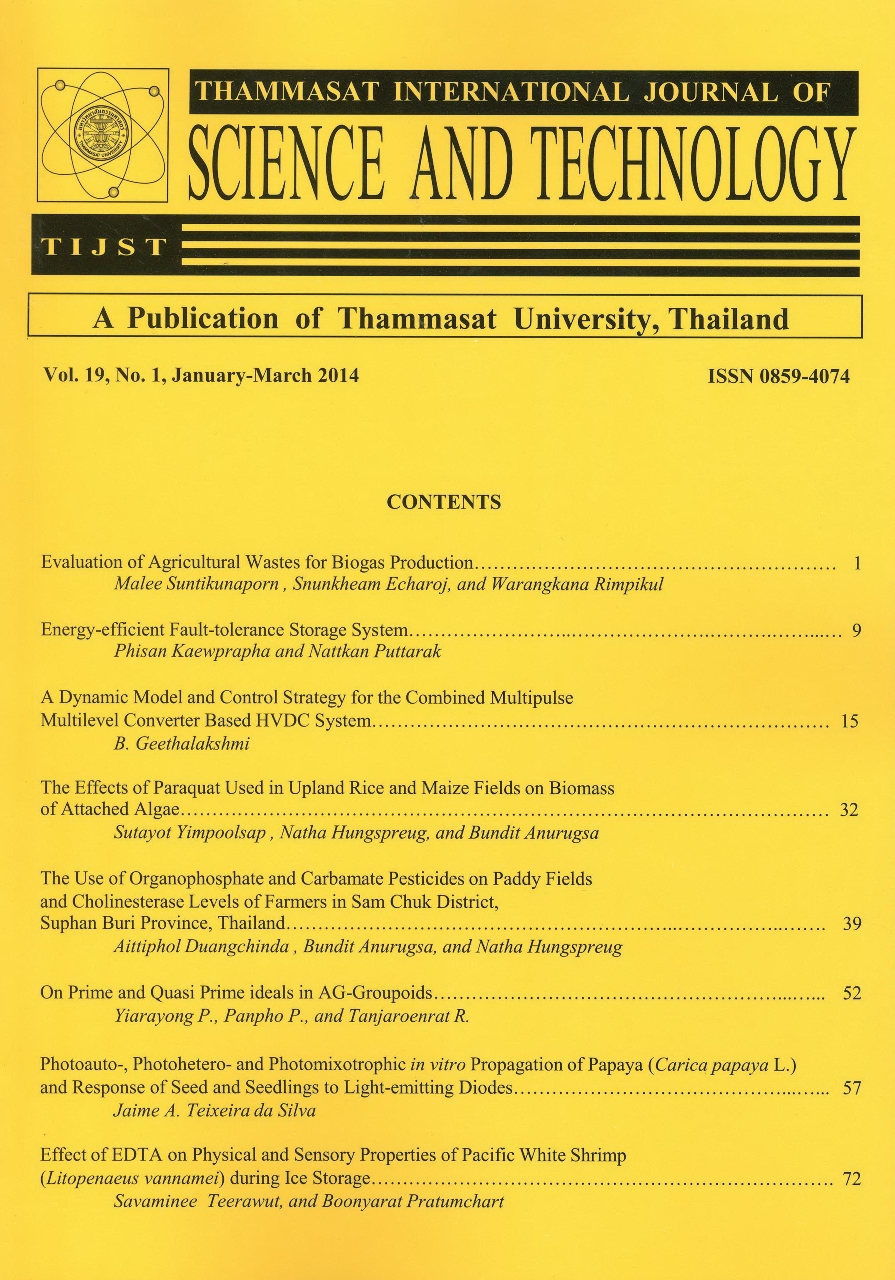Water Footprint Evaluation of Oryza sativa L.Tha Wang Pha District, Nan Province
Main Article Content
Abstract
This study evaluated water requirements for rice plantation (Orysa sativa L.) at Tha Wang Pha district, Nan Province covering an area of 690 ha in 8 villages. Water footprint (WF) for rice was evaluated by precipitation which was varied during plantation period. The CROPWAT 8.0 model was used to process important data such as rainfall, atmospheric data, evapotranspiration data, and rice yield and rice types. The results showed the evapotranspiration (ETo) and crop coefficient (Kc) of rice as 34.55 millimeter per week and 11.09 and ETc was 33.93 millimeter per week. The cropping calendar covered four months from July to October 2011-2012. Most rainfall occurred in September with 452.7 mm. During the study rice mainly used rainfall so the blue water footprint (WFblue) was not evaluated. The grey water footprint (WFgrey) was calculated by using phosphate-phosphorus in the study area and correlated with rice yield of plantation. WFgrey for rice was equal to 788.49 m3/ton. The green water footprint (WFgreen) should correlate with rainfall data and rice yield at 4 stages of plant development, i.e., land preparation and vegetative growth, reproductive growth, grain development and harvest. The result of WFgreen for rice was calculated by CROPWAT 8.0 software to be equal to 1,470.33 m3/ton with the rice yield of 0.48 ton/rai (3 ton/ha). The total water footprint (WF) for rice was 2,258.82 m3/ton and was related with the rice growth period and rainfall.
Keywords: water management; rice production; water footprint


